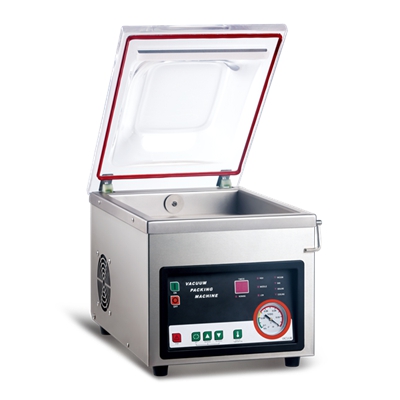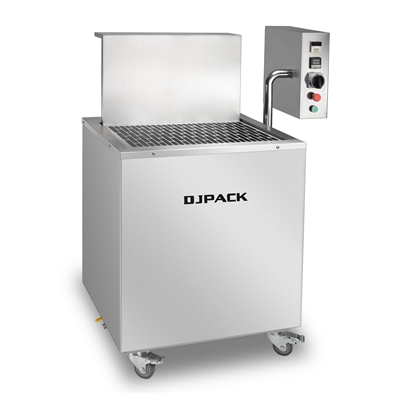Vacuum packing is a method of packaging that removes air from the package prior to sealing. This method involves (manually or automatically) placing items in a plastic film package, removing air from inside, and sealing the package.


Shrink film is sometimes used to have a tight fit to the contents. The intent of vacuum packing is usually to remove oxygen from the container to extend the shelf life of foods and, with flexible package forms, to reduce the volume of the contents and package.


Vacuum packing reduces atmospheric oxygen, limiting the growth of aerobic bacteria or fungi, and preventing the evaporation of volatile components. It is also commonly used to store dry foods over a long period of time, such as cereals, nuts, cured meats, cheese, smoked fish, coffee, and potato chips (crisps). On a more short term basis, vacuum packing can be used to store fresh foods, such as vegetables, meats, and liquids, because it inhibits bacterial growth.
Vacuum packaging products, using plastic bags, canisters, bottles, or mason jars, are available for home use.

For delicate food items which might be crushed by the vacuum packing process (such as potato chips), an alternative is to replace the interior gas with nitrogen. This has the same effect of inhibiting deterioration due to the removal of oxygen.
When foods are frozen without preparation, freezer burn can occur. It happens when the surface of the food is dehydrated, and this leads to a dried and leathery appearance. Freezer burn also ruins the flavor and texture of foods. Vacuum packing canreduces freezer burn by preventing the food from exposure to the cold, dry air.

Vacuum packaging also allows for a special cooking method, sous-vide. Sous-vide, French for under vacuum, involves poaching food that is vacuum sealed in a plastic bag.

And in an oxygen-depleted environment, anaerobic bacteria can proliferate, potentially causing food-safety issues. Some pathogens of concern in vacuum packed foods are spore-forming non-proteolytic Clostridium botulinum, Yersenia enterocolitica, and Listeria monocytogenes.[6] Vacuum packing is often used in combination with other food processing techniques, such as retorting or refrigeration, to inhibit the growth of anaerobic organisms.
Solution recommendation:
 |
||
|
Vacuum Packaging Machine |
||
| Learn More | ||
 |
||
|
Dip Shrink Tank |
||
| Learn More |
|
|

_4x4-130554.jpg)











 ru
ru
 en
en de
de fr
fr jp
jp es
es pt
pt ae
ae